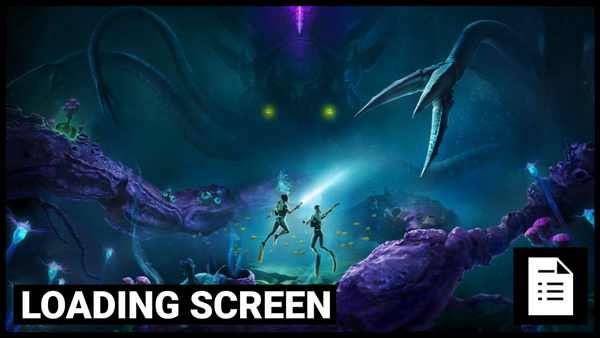These Developers Are Telling Us What We Want To Hear
Three AAA Game Developers want you to know they’re making games the way you want. No Microtransactions, Games that aren’t overstuffed to drive retention and post launch support that feels fair. All as a core part of their marketing plan.

Three AAA Game Developers want you to know they’re making games the way you want. No Microtransactions, Games that aren’t overstuffed to drive retention and post launch support that feels fair.
It’s good news - because the people that are making and selling some of the biggest games in the world are actively turning against preconceived wisdom about games - and using that opposition as a marketing beat.
- Earlier this week we covered the numbers behind the games industry, revealing the truth about the industry as a whole:
- Live service games, $70 games, and games that are all about player retention are how you make the most money in games.
- But while that might make up the wider industry, it doesn’t reflect the desires of every audience.
- So if you want to market your game as being for that enthusiast, committed audience - then you can set yourself apart by telling them you’re making games for the right reasons, the right way.
- We saw this last year when Naughty Dog publicly made a big deal of not making a live service as a marketing beat.
- But that seems to have opened the floodgates, as recent weeks have seen companies at the top of the AAA industry actively positioning themselves as making the games that “real gamers” want.
- And making the design decisions to back that up.
CD Projekt Red
- Perhaps most notable of these was CDPR.
- CD Projekt Red didn’t just argue that there was no place for Microtransactions in their games - they explicitly said that to investor questions during an earnings call.
- The same call where they confirmed that they now have 400 developers working on the next single player Witcher title.
- As recorded by Polish site Stockwatch.pl, Piotr Nielubowicz, Chief Financial Officer, and Karolina Gnaś, VP for Investor Relations for CDPR spoke to press and investors.
- They were answering the usual type of questions, one of which was explicitly about whether CDPR games would get microtransactions in the future.
We do not see a place for microtransactions in the case of single-player games, but we do not rule out that we will use this solution in the future in the case of multiplayer projects.
Piotr Nielubowicz, Chief Financial Officer CDPR
- With multiplayer projects in this case being the explicitly multiplayer Sirius projects (which by comparison currently has 40 staff working on it).
- And this isn’t necessarily anything new - even though Cyberpunk’s only DLC was Phantom Liberty, we know the company aren’t interested in loads of small purchases, they’d rather just make a few things people feel willing to buy.
- Just look at The Witcher 3:

- Of course CDPR aren’t going to implement nickel and dime microtransactions, it would be a wild departure.
- So why is this one relevant?
- Because of who is being told no.
- Investors and shareholders are often the ones pushing hardest for bigger profits and higher revenue, all in the hopes of either a higher dividend or a chunkier share sale for them.
- CDPR basically said that while they might consider MTX for their multiplayer titles - that their core products won’t be changing to suit investor interests.
- And knowing that the contents of their earnings reports will always be passed on to eager audiences - this is a signal to them too.
- You don’t have to worry about the next Witcher, or any other single player game from them.
- Which is objectively good news, and gets CDPR a nice PR bump too.
- But lets keep going - as CDPR aren’t the only ones using this kind of rhetoric.
Ninja Theory
- In an interview with IGN around the previews for Senua’s Saga: Hellblade II - Ninja Theory were keen to explain the prospect of their game as a short, cheaper title that is pitched as a single, focused experience.
- Reminder - Hellblade II is $50, isn’t releasing physically and that the team expect to be around 8 hours long.
- And again, we get to see this marketing work in place - as Ninja Theory suggest that their fans are the ones asking for these shorter games, with defined narratives and no bloat.
“I think there's a lot of pressure on people's time these days and I think our fans, from what we hear from them, they enjoy a shorter game where our intention is that every step of that journey is meaningful… There's an audience of people that want games that are focused.”
Ninja Theory Studio Head Dom Matthews - IGN
- And he’s not wrong - there are a lot of people out there who feel that way - especially about the first Hellblade.
- And even within the studio, the push is to present these games as being curated, designed to be enjoyed in this specific way that doesn’t reflect a live service grind built around retention.
“So I'm really pleased to see that there's a lot of people that actually enjoy a shorter experience, something that they can sit down on a whatever Friday night, stick their headphones on, turn the lights off and kind of sink into an experience and players who don't necessarily want something that is 50 hours long, a 100 hours long, so it's as long as it needs to be. And I'm one of those people, I like shorter games.
Ninja Theory Studio Head Dom Matthews - IGN
- So what’s explicitly worth talking about here is that this is marketing through and through.
- What is effectively a weakness of Hellblade (that it’s a photorealistic game that would presumably cost exponentially more to design multiple more hours of content for) is being presented as not just a strength, but a design decision at the game’s core.
- And they’re not wrong to present it that way!
- Because we know there’s specific audiences for whom this type of game is a real draw - precisely because it gives all the polish and style of a big AAA title, that will absolutely push their 4090s to render it at the highest fidelity - and where it can also still be completed in a weekend.
- In opposition to the games that constantly demand your time and your wallet every few weeks.
- Outside of established studios though - there’s even space for new players to capitalise on all of this.
Shift Up
- Shift Up are releasing their first premium console title this month in Stellar Blade - after a wealth of success with Nikke: Goddess of Victory - a Mobile/PC Gacha title.
- With the common thread of attractive character designs and lots of skins, some folks were wondering if Stellar Blade would follow in Nikke’s footsteps.
- Turns out, No.

- In an article originally run on Ruliweb, and then translated by IGN - the game’s director confirmed that the company’s history had no impact on the wider monetisation plans for Stellar Blade.
"We want to make it clear at this point that Stellar Blade will not require any additional expenses that gamers are not aware of beyond what they paid for the package,"
Stellar Blade director Kim Hyeong-tae - Ruliweb, Translation IGN
- With their only caveat being that if there are licensed skins from collaborations to be added, they may require a fee to cover the deals made.
- (considering how quickly Square Enix will throw 2B from Nier Automata at anyone who asks, those comparisons everyone keeps making might become more literal)
- Otherwise the skins they have planned for after launch, the new game plus and any other updates will all be coming to audiences for free.
- Again, this is just smart marketing - if you’re coming into the market for the first time and you know there’s an audience who’ll be interested in your game specifically because there’s no MTX?
- Then capitalising on that to show you’re part of the solution, not the problem, is a great idea.
- If you happen to have already made lots of money from gacha audiences, then you can bankroll decisions like that.
- Especially if your game matches the genres that those audiences adore like Character Action and Fromsoft style titles.
- Because now your brand new title has another reason for potential fans to champion it.
- It’s marketing and it’s design in one go - taking a less immediately lucrative position in the hopes that your reputation with the audience you’re courting will grow.
- Putting this all together then, if there’s one thing we’ve learned from 2024 so far - beyond that $40 games are doing well, and that there’s so much space for indies to come out of nowhere - it’s that the audience for games is now wide enough that lots of studios can find success.
- It’s not a zero sum game.
- The live service games will still make money regardless, so everyone else can simply cater to the other audiences in gaming.
- If you as an audience member want your games to be fairly priced, to have respectful monetisation and to deliver fully complete experiences - you can find them!
- And now companies are starting to realise that and adjust their marketing accordingly.
- Even AAA companies are saying what we want to hear, and making design decisions that reinforce that.
- Which means only better things for you - the audience.
- Because the biggest problem you have isn’t a lack of games, it’s getting to the games you actually want to play.
- If even the biggest companies are starting to drill down on the specific things you are about - you get to play more games you’ll actually like.
- Rather than games that anger and frustrate you with their models for monetisation.





